Honda NC 700 X ABS (2012- current): The things to come scenario concerning everyday bikes
Engine: The parallel twin 670 c.c. engine delivers 51 bhp/6250 rpm and 6.3 Kgm/4750 rpm (45.73 lbs ft), claimed figures.Actually the engine will require at least 1500 to 2000 rpm according to the selected speed at the gearbox in order to provide surge-free acceleration.
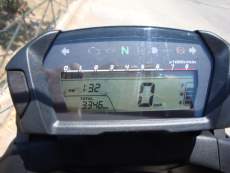
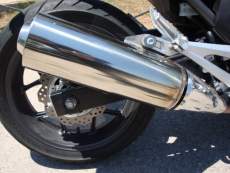
The clutch is very light. Engine response is very linear, although just when things are getting interesting, …the rev limiter intervenes at 6500 rpm!
Gearing is really tall. With 6th speed selected, 3000 rpm correspond to 93 km/h (58 mph), 4000 rpm to 127 km/h (79 mph), indicated figures. Thus considering the provided acceleration shifting gears, the operational spectrum up to 4000 rpm (!) surpasses the normal urban needs. A fast rider will have a lot of work to do, changing gears. This is an advantage for the automatic transmission DCT version of the bike.
The power provided will not be thrilling to an expert and fast rider, its very usable though by any rider on normal use.
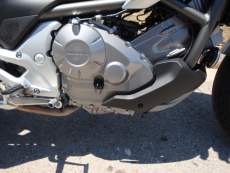
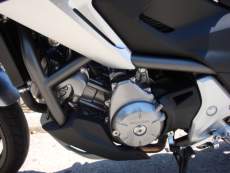
The engine of the NC 700X or S or Integra is derived from the car sector, actually its nearly half a Honda Jazz one. ItĒs a smart perception since the bike engines give priority to sheer performance, while their fuel consumption figures are recently worse than the equivalent car figures. The NC 700X engine gives priority to the fuel consumption, deteriorating performance, thatĒs quite clear and loud.
The fuel tank lies underneath the saddle. Although itĒs a parallel twin engine, it imitates the sound and operation of a V-twin one. ItĒs a very refined bass engine sound. One thing that could be improved is the insertion of a fuel reserve light or a more obvious fuel reserve indication. Any trip computer in the future?
An indicative average fuel consumption figure is 4.2 l/100 Km (67 mpg Imperial), tank range is 350 km, (217.5 miles).
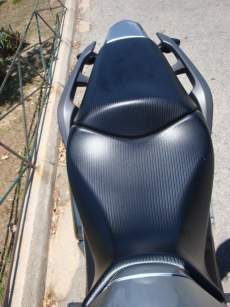
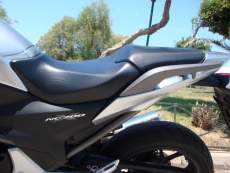
Riding position: The height of the saddle is high, 830 mm (32.7 in.), the width of the saddle is decreased. Thus it will be adequate to average stature riders or higher.
Pillion is seated marginally higher than the rider, the space on the pillion saddle is narrow, yet comfortable. The angle of the pillionĒs knees is natural, the handgrips are very usable.
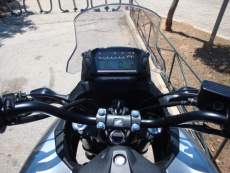
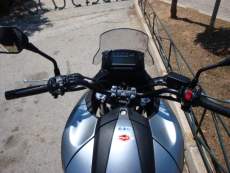
The dimensions of the NC 700X are normal for a 700 c.c. bike. The width is decreased. The weight of the bike is average, 214 Kgs, (472 lbs), (218 Kgs or 480.6 lbs for the DCT version), nominal kerb. The weight diet compared to the IntegraĒs DCT-ABS 238 Kg (524 lbs), is obvious on the road.
Rider is placed a little more in than over the bike, riding position is neutral and relaxed. RiderĒs torso is slightly inclined to the front.
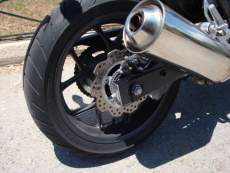
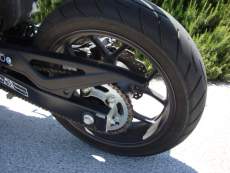
On the road: Suspensions are soft. A conventional 41 mm fork is equipped at the front, a single shock with a Pro-Link (linkage) at the rear.
The O.E. tyres are Metzeler Interact Z8 with dimensions 120/70-17 at the front and 160/60-17 at the rear. They are considered to be a good choice regarding the smooth bikeĒs character. In case that a rider would try to simulate motoGP riding on the NC 700X, these tyres do not feel really appropriate. Aluminium cast rims are equipped.
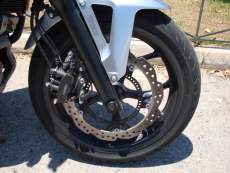
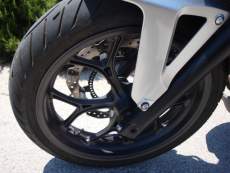
In town the NC 700 X is neutral and agile. The low rpm operation and the as-much-as-necessary performance from the engine are relaxing to the rider. The dimensions and the weight of the bike are close to the naked and street bikes category, hence it feels lighter than the Integra.
It is certainly a very user friendly bike. The NC 700 X could be used solely on urban rides, without asking for major compromises to the rider.
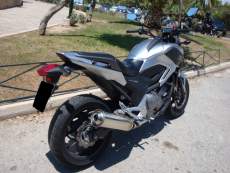
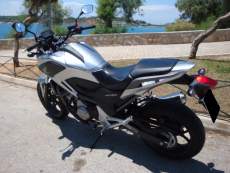
On downtown rides the steering lock could be that of any big street motorcycle. It could be slightly better, e.g. like IntegraĒs.
Filtering is good. The height of the handlebar is greater than the height of car mirrors, sometimes itĒs the same with low SUV mirrors, while the mirrors of the bike are at about the same height with tall SUVĒs mirrors.
Street imperfections damping is really good. The large bumps however are felt by the rider.
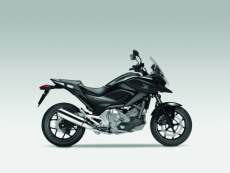
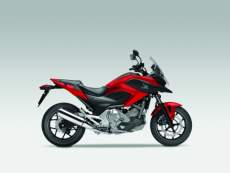
On B-roads the NC 700 X is quite agile and stable at the same time. It could be used for this type of rides only, without any compromises asked.
The slow steering geometry (1540 mm-60.63 in. wheelbase, 27° rake, 110 mm-4.33 in. trail), is quite a surprise due to the provided agility. Comfort over road imperfections is very good. Conclusively on B-roads, the NC 700 X will ask minor only compromises.
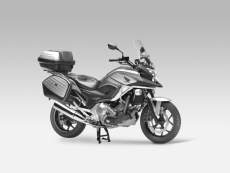
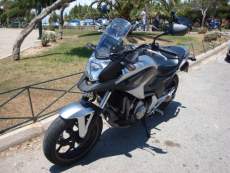
At a nimble pace, a nice mixture of agility and stability is provided, converting rather fast riding to an effortless procedure. Gradually, at an even faster pace, feedback to the rider is diminished and suspensions feel softer and softer.
As a result, except from the engine power, the handling will not be adequate at a pace equivalent to that of a track day. This is a statement used for comparative reasons, its very unlikely that any rider will attempt a track day on a NC 700 X! From the other hand, certain people have travelled on a C-50 moped, so you never know enough about human nature!
Conclusively the bike shows to the rider that itĒs not made for such a use, although if rider is in the mood, it will be adequate up to a point.
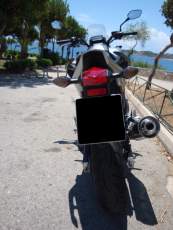
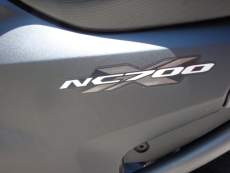
On the highway stability is very good. Travelling speed will be limited to 150 Km/h (93 mph), due to the tiny fly screen which may be adjusted in two increments.
Up to a 180 km/h (112 mph) the air flux is dispersed on the riderĒs torso. However there is a lot of air flow around the rider, especially buffeting the shoulders. In order to retain travelling comfort, the speed is limited to 150 km/h (93 mph).
The engine is operating effortless then, it will require 6000 rpm to propel the bike to 190 km/h (118 mph). Its obviously not a touring bike, due to the moderate travelling speed in respect to the engine capacity.
This could be an advantage though. On such a travelling speed, the underpowered engine doesnĒt fell as such. Top indicated speed is 195 km/h (121 mph).
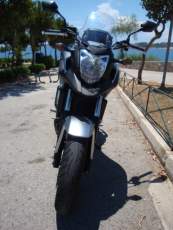
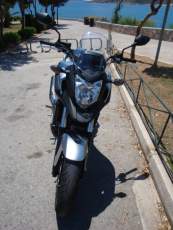
On dirt roads the NC 700X is user friendly, smooth, very comfortable. The large wheel travel (150 mm-5.91 in) is the main reason to that. The road oriented tyres are not really suitable to get grip.
At a faster pace ground clearance is not adequate. Soon the bike will touch down, there is no shield to protect the carter. The cast wheels are not very suitable for fast or careless riding on soil roads.
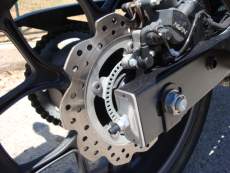
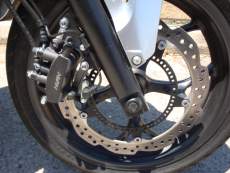
Brakes are C-ABS which is a standard on specific countries. Single petal rotors are equipped front (320mm) and rear (240mm). A three piston caliper is equipped at the front, a single piston caliper at the rear.
Brakes are powerful, linear. Feedback to the rider is average whenever the ABS is activated. The use of the rear brake provides powerful braking due to the combined operation. Braking performance is within the standards of the C-ABS Honda brakes, that means very good.
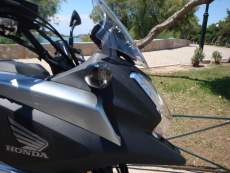
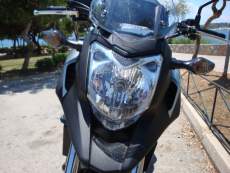
Reliablility/ quality build/ other versions/optional: The under stressed engine is probably capable of very high mileage. The quality build is superb which is natural since the bike is made in Japan.
The NC 700X is the second out of three versions sharing the same frame, suspensions and wheels. Except from the NC 700 X which is the on-off version of the family, the Integra is the touring-scooter member and the NC 700 S is the naked version.
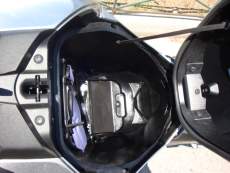
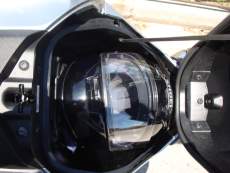
The NC 700 X is manufactured in two versions, featuring a manual or an automatic DCT gearbox. The performance of the DCT version is described at the Integra review. In some countries the engine performance is restricted to 47 bhp while in some other countries the ABS is available only at the DCT version.
Factory optional extras include a 35 or 45 liters top case, 29 liters panniers, a higher screen, a 12 V plug, centre stand, leg deflector kit, LED fog lamp kit, etc.

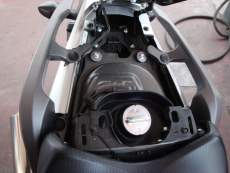
Comments: The 21 liters storage space which replaces the fuel tank in front of the rider, is adequate for a full face helmet. It has to be inserted in a specific way, leaving some free space for two T-shirts as an example. This storage space is adequate for the everyday needs of a rider.
A point to be improved is the lid of the storage space which leaves a tiny gap when it is closed. It could be even less, thus a person around the bike could not tell that this is a storage space underneath. At the bottom of the storage space is the battery and the fuse box area.
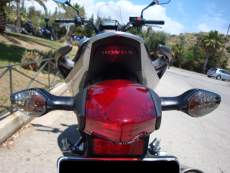
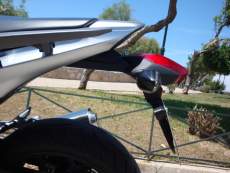
The plastic parts at the external sides of this storage area are smart, because in case of a crash, rider will need to replace these, rather cheap parts. The white light on the display is also nice, although only the standard indications are displayed. The fuel cap is underneath the pillion seat, which is unlocked and held upwards like a car bonnet.
From the riderĒs point of view, the tiny LCD display and the small screen donĒt really coincide with the wide storage space as they serve as an optical extension to that. Lights are superb. According to the latest habit of Honda and Bmw, the switch for the horn is reversed with the switch for the indicators. This requires some familiarisation from the rider, especially one riding other bikes as well at the same time.
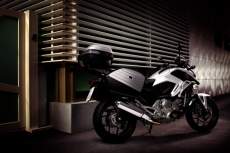
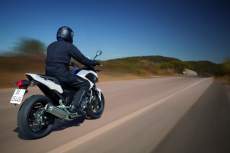
Introducing only minor changes, HondaĒs NC 700X provides a different riding character from her scooter-sister Integra which was not really expected actually. However while Integra has the advantage to be compared with motorcycles and in case that was against it, the Integra could be compared with the scooter world, the NC 700 X simply canĒt find weaker opponent categories.
Compared with motorcycles of this engine capacity, its very frugal yet uninspiring. The main reason is the low fuel consumption which restricts this 700 c.c. bike to 50 bhp only. That makes a smoother Transalp compared to the old data, or a sweeter Crossrunner according to the latest data. It seems difficult to be that smooth, yet it is!
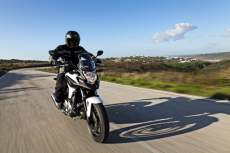
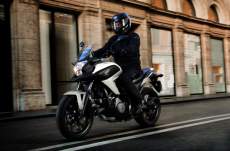
Many Honda bikes feel smooth yet preppy over the last decades, the NC 700 X is one of those motorcycles again. This is an advantage to some riders and a disadvantage to others.
Additionally, although Honda bikes cannot be classified in specific categories sometimes, the factory likes to invent them in some cases e.g. fun-moto, road-sport. Surely enough it addresses to riders searching for an everyday, frugal and user friendly bike. From the other hand, so many motorcycles boasting lots and lots of character, how often are they used as such?
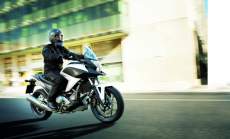
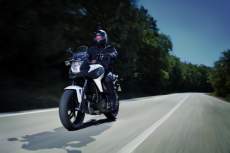
Except from the similarities and differences in terms of riding, there are also design similarities. Paradoxically, at the last two years, HondaĒs design at the front of their bike range seems uniform. It all started with the PCXĒs effort to resemble to the VFR 1200 F. The Crossrunner has some common design elements with the NC 700 X and the Crosstouter. It just starts to remind the similarities among the Suzuki GSXR family…

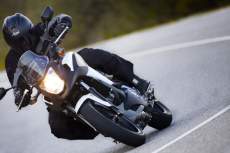
Compared with the Integra, the NC 700X addresses to a slightly different audience, which creates new questions for the future: What will the NC 700 S be like on the road?
Undoubtedly, the top priority of the NC 700X is the low fuel consumption. Maybe, the hybrid technology will be cheap and light one day, although up to that date, the Integra and the NC 700 X and S, will impose the first persuasive solution concerning low fuel consumption in the motorcycles world for the future.
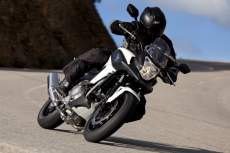
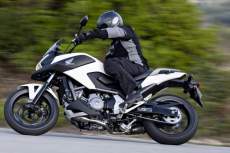
Price ABS: 7500 Euros
Price DCT-ABS: 8560 Euros
+ Fuel consumption
+ Everyday use, a user-friendly bike
+ Various fields of use
+ Low tag price for a made in Japan bike
- Smooth bike character, mainly due to the low power output
- Air protection on the highway
More, specifications



hh1313
dim@moto-choice.com